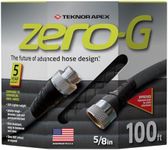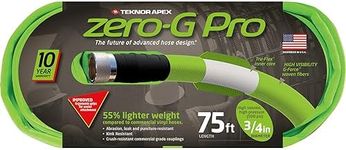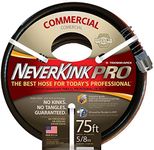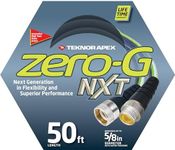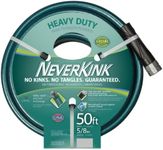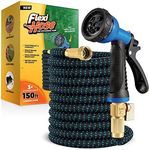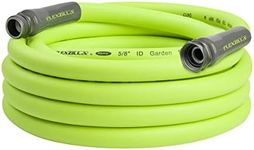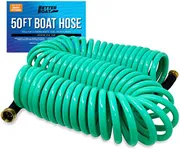Buying Guide for the Best Flat Garden Hose
Choosing the right flat garden hose can make your gardening tasks much easier and more efficient. A flat garden hose is a great option for those who need a lightweight, easy-to-store hose that doesn't take up much space. When selecting a flat garden hose, it's important to consider several key specifications to ensure you get the best fit for your needs. Here are the main factors to consider and how to navigate them.LengthThe length of the hose is crucial because it determines how far you can reach with it. Flat garden hoses come in various lengths, typically ranging from 25 feet to 100 feet. If you have a small garden or patio, a shorter hose (25-50 feet) might be sufficient. For larger gardens or if you need to reach distant areas, a longer hose (75-100 feet) would be more appropriate. Consider the size of your garden and the distance from your water source to determine the right length for you.
MaterialThe material of the hose affects its durability and flexibility. Common materials include vinyl, rubber, and reinforced materials. Vinyl hoses are lightweight and affordable but may not be as durable. Rubber hoses are more durable and flexible but can be heavier. Reinforced hoses offer a good balance of durability and flexibility. If you need a hose for light, occasional use, a vinyl hose might be sufficient. For frequent or heavy-duty use, consider a rubber or reinforced hose.
DiameterThe diameter of the hose affects the water flow rate. Common diameters for flat garden hoses are 1/2 inch, 5/8 inch, and 3/4 inch. A larger diameter allows more water to flow through the hose, which can be beneficial for tasks that require a lot of water, such as watering large gardens or filling pools. For general gardening tasks, a 5/8 inch diameter is usually sufficient. If you need a higher water flow rate, consider a 3/4 inch diameter hose.
FlexibilityFlexibility is important for maneuvering the hose around your garden without kinking or tangling. Flat garden hoses are generally more flexible than traditional round hoses, but the level of flexibility can still vary. Look for hoses that are advertised as kink-resistant or have a high flexibility rating. If you have a garden with many obstacles or tight corners, a highly flexible hose will make your work easier.
StorageOne of the main advantages of flat garden hoses is their ease of storage. They can be rolled up flat, taking up less space than traditional hoses. Some flat hoses come with a storage reel or bag, which can be very convenient. Consider where you will store the hose when not in use and whether you need additional storage accessories. If space is limited, a flat hose with a compact storage solution will be ideal.
FittingsThe fittings on the ends of the hose are important for connecting to your water source and any attachments like nozzles or sprinklers. Common materials for fittings include plastic, brass, and aluminum. Brass fittings are the most durable and resistant to corrosion, while plastic fittings are lightweight and affordable but may not last as long. Aluminum fittings offer a balance between durability and weight. Choose fittings based on the frequency of use and the type of attachments you plan to use.
